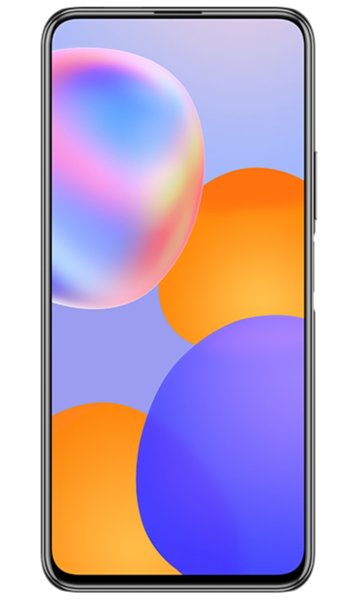Huawei Y9a vs Xiaomi Redmi Note 9 Comparison and Differences
Smartphone 1

Huawei Y9a
Smartphone 2

Xiaomi Redmi Note 9
Smartphone 3
Huawei Y9a or Xiaomi Redmi Note 9 Specs Comparison
or
 Common specs
Common specs
| Brand and model | Huawei Y9a | Xiaomi Redmi Note 9 | |
| Rating | (+0) | (+0) | |
| Release date | 2020, September 07 | 2020, April 30 | |
| Dimensions (HxWxD) | 163.5 x 76.5 x 9 mm | 6.44 x 6.44 x 3.01 in | 162.3 x 77.2 x 8.9 mm | 6.39 x 6.39 x 3.04 in | |
| Weight | 197 g | 6.95 oz | 199 g | 7.02 oz | |
| Body Build | Glass front (Gorilla Glass 5), plastic frame | ||
| Case | buy from Amazon | buy from Amazon | |
| Colors | Space Silver, Sakura Pink, Midnight Black | Forest Green, Midnight Grey, Polar White | |
| Battery | 4200 mAh, Li-Po, non-removable | 5020 mAh, Non-removable Li-Po | |
| Approximate price | 200 EUR | $ 150 | |
| Check price | from Amazon | from Amazon |
 Screen
Screen
| Technology | IPS LCD | IPS LCD | |
| Touchscreen | capacitive touchscreen | capacitive touchscreen | |
| Display colors | 16M | 16M | |
| Screen size | 6.63" in | 6.53" in | |
| Screen area | 106.1 cm2 | 104.7 cm2 | |
| Screen format | 20:9 (height:width) | 19.5:9 (height:width) | |
| Screen to body ratio | 84.8% | 83.5% | |
| Screen resolution | 1080 x 2400 px | 1080 x 2340 px | |
| Screen PPI /points per inch/ | 397 PPI | 395 PPI | |
| Screen protection | Corning Gorilla Glass 5 | ||
| Other specs | - 450 nits typ. brightness (advertised) | ||
| Screen protector | buy from Amazon | buy from Amazon |
 Camera and Video
Camera and Video
| Rear camera, main | 64 MP, Quad | 48 MP, Quad | |
| Camera specs | -64 MP, f/1.8, 26mm (wide), PDAF -8 MP, f/2.4, 120˚ (ultrawide) -2 MP, f/2.4, (macro) -2 MP, f/2.4, (depth) |
-48 MP, f/1.8, 26mm (wide), 1/2.0'', 0.8µm, PDAF -8 MP, f/2.2, 118° (ultrawide), 1/4.0'', 1.12µm -2 MP, f/2.4, (macro), AF -2 MP, f/2.4, (depth) |
|
| Functions | Quad-LED flash, HDR, panorama | LED flash, HDR, panorama | |
| Video | 4K@30fps, 1080p@30fps, gyro-EIS | 1080p@30fps | |
| Front camera, selfie | 16 MP, Single | 13 MP, Single | |
| Specifications | Motorized pop-up 16 MP, f/2.2, (wide), 1/3.1'', 1.0µm | 13 MP, f/2.3, 29mm (standart), 1/3.1'', 1.12µm | |
| Functions | HDR | HDR, panorama | |
| Video | 1080p@30fps | 1080p@30fps |
 Performance
Performance
| Operating system - OS | Android 10, EMUI 10.1, no Google Play Services | Android 10; MIUI 11 | |
| Chipset | - Mediatek Helio G80 (12 nm) | - MediaTek Helio G85 (12nm) | |
| CPU | - Octa-core (2x2.0 GHz Cortex-A75 & 6x1.8 GHz Cortex-A55) | - Octa-core (2x2.0 GHz Cortex-A75 & 6x1.8 GHz Cortex-A55) | |
| GPU | Mali-G52 MC2 | Mali-G52 MC2 | |
| External memory | NM (Nano Memory), up to 256GB (uses shared SIM slot) | microSDXC (dedicated slot) | |
| Internal memory | 128GB 6GB RAM, 128GB 8GB RAM | 64GB 3GB RAM, 128GB 4GB RAM |
 Benchmark
Benchmark
| Antutu 9 Total | 154790 | ||
| Antutu 8 Total | 205832 | ||
| GeekBench 5 Single Core | 400 | 365 | |
| GeekBench 5 Multi-Core | 1400 | 1355 |
 Communication and Connectivity
Communication and Connectivity
| SIM card | Dual SIM (Nano-SIM, dual stand-by) | Dual SIM (Nano-SIM, dual stand-by) | |
| Network | GSM / HSPA / LTE | GSM / HSPA / LTE | |
| Bands | -2G - GSM 900 / 1800 / 1900 - SIM 1 & SIM 2 -3G - HSDPA 850 / 900 / 1700(AWS) / 1900 / 2100 -4G - 1, 2, 3, 4, 5, 7, 8, 20, 28, 38, 40, 41 - FRL-L22 |
-2G - GSM 850 / 900 / 1800 / 1900 - SIM 1 & SIM 2 -3G - HSDPA 850 / 900 / 1700(AWS) / 1900 / 2100 -4G - 1, 2, 3, 4, 5, 7, 8, 20, 28, 38, 40, 41 |
|
| Speed | HSPA 42.2/5.76 Mbps, LTE-A | HSPA 42.2/5.76 Mbps, LTE-A | |
| GPRS | Yes | Yes | |
| Edge | Yes | Yes | |
| Wi-Fi | Wi-Fi 802.11 a/b/g/n/ac, dual-band, Wi-Fi Direct, hotspot | Wi-Fi 802.11 a/b/g/n/ac, dual-band, Wi-Fi Direct, hotspot | |
| GPS | Yes, with A-GPS, GLONASS, BDS | Yes, with A-GPS, GLONASS, GALILEO, BDS | |
| NFC | Yes (market/region dependent)M2003J15SG (Yes); M20 | ||
| USB | 2.0, Type-C 1.0 reversible connector, USB On-The-Go | 2.0, Type-C 1.0 reversible connector | |
| Bluetooth | 5.1, A2DP, LE | 5.0, A2DP, LE | |
| Harmful irradiation |
SAR - 0.84 W/kg (head) 0.90 W/kg (body) SAR EU - 0.80 W/kg (head) 1.14 W/kg (body) |
 Music and Audio
Music and Audio
| Radio | No | ||
| Headphone jack | Yes | Yes |
 Other features
Other features
| Sensors | - Fingerprint (side-mounted), accelerometer, gyro, proximity, compass | - Fingerprint (rear-mounted), accelerometer, gyro, proximity, compass , Infrared port | |
| Other extras |
- Fast charging 22.5W/40W , 70% in 30 min |
- Fast charging 18W -Reverse charging 9W - Splash-proof coating |
Reviews and Opinions on Huawei Y9a and Xiaomi Redmi Note 9
If you had to recommend one of these phones to a friend, which one would it be and why? Share your arguments using the Add Opinion button!
